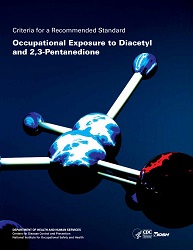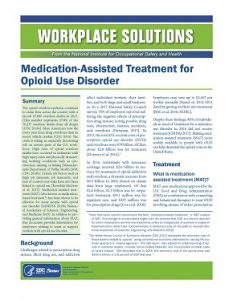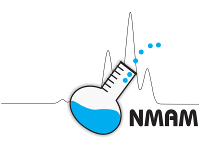Getting the Word Out: NIOSH Publications and Products
Posted on by It’s an understatement to say that how the world communicates has changed over the course of this century, and certainly in the last 50 years. Over NIOSH’s 50-year history how the Institute communicates its research, and to whom, has also evolved. As a leading scientific agency, our research will always be published in peer-reviewed journals and internal scientific mechanisms such as Criteria Documents, which provide the basis for occupational safety and health standards, and Current Intelligence Bulletins which review and evaluate new and emerging hazards. Scientists, researchers, and policy makers trained in the technical language of science rely on these products.
It’s an understatement to say that how the world communicates has changed over the course of this century, and certainly in the last 50 years. Over NIOSH’s 50-year history how the Institute communicates its research, and to whom, has also evolved. As a leading scientific agency, our research will always be published in peer-reviewed journals and internal scientific mechanisms such as Criteria Documents, which provide the basis for occupational safety and health standards, and Current Intelligence Bulletins which review and evaluate new and emerging hazards. Scientists, researchers, and policy makers trained in the technical language of science rely on these products.
But diverse populations of workers, employers, partner organizations, and the general public also benefit from NIOSH occupational safety and health information and  recommendations. Realizing that not all audiences want to read scientific publications, NIOSH expanded its communication products. In the mid-1970’s NIOSH produced the easy-to-read, industry-specific Health and Safety Guides. In the 1980’s NIOSH began producing the user-friendly Hazard Alerts which briefly present information about newly identified occupational hazards and urgently request assistance in preventing, solving, and controlling these hazards. New products such as fact sheets, hazard controls, information circulars and workplace solutions continued to emerge as NIOSH focused on translating science into products that were easier for workers, employers, and the general public to understand. These include products that have been translated in diverse languages and audience tested on different worker populations. In addition to printed material, NIOSH produces videos for workers and employers including both training videos and videos that provide basic information about various hazards.
recommendations. Realizing that not all audiences want to read scientific publications, NIOSH expanded its communication products. In the mid-1970’s NIOSH produced the easy-to-read, industry-specific Health and Safety Guides. In the 1980’s NIOSH began producing the user-friendly Hazard Alerts which briefly present information about newly identified occupational hazards and urgently request assistance in preventing, solving, and controlling these hazards. New products such as fact sheets, hazard controls, information circulars and workplace solutions continued to emerge as NIOSH focused on translating science into products that were easier for workers, employers, and the general public to understand. These include products that have been translated in diverse languages and audience tested on different worker populations. In addition to printed material, NIOSH produces videos for workers and employers including both training videos and videos that provide basic information about various hazards.
NIOSH also produces many comprehensive resources that those working in occupational safety and health rely on to do their jobs such as:
- The NIOSH Pocket Guide to Chemical Hazards (NPG) provides information about workplace chemicals and their hazards. The NPG is the most-requested NIOSH document and is also available online and as a PDF and mobile web app.

- The NIOSH Manual of Analytical Methods (NMAM) is a collection of methods for sampling and analysis of contaminants in workplace air, surfaces, and in the blood and urine of workers who are occupationally exposed.
- The Registry of Toxic Effects of Chemical Substances (RTECS) is a list of hazardous materials published annually.
- The Certified Equipment List provides a list of NIOSH certified respirators and allows users to select the appropriate respirator and search for replacement parts.
Additionally, when NIOSH conducts a Health Hazard Evaluation, a Fatality Assessment and Control Evaluation, or a Fire Fighter Fatality Investigation reports are generated so that others can learn from what was discovered during these investigations.
Keeping Up with Technology
As the world went digital, so too did NIOSH communication efforts. The NIOSH website was launched in 1996 and is now a primary tool for communicating NIOSH research and prevention activities. In 2020, NIOSH webpages were viewed 49,584,761 times. In 2003, eNews, the NIOSH monthly newsletter, debuted.
 Realizing that it is important to reach users where they are already accessing information, NIOSH entered the world of social media with the NIOSH Science Blog, Facebook, Twitter, and Instagram. Each January, the most popular information on all of these channels is highlighted on the NIOSH Science Blog.
Realizing that it is important to reach users where they are already accessing information, NIOSH entered the world of social media with the NIOSH Science Blog, Facebook, Twitter, and Instagram. Each January, the most popular information on all of these channels is highlighted on the NIOSH Science Blog.
NIOSH has embraced technology in our efforts to prevent workplace illness, injury, and fatalities. A series of software products and mobile apps provide innovative tools to protect workers and help with prevention efforts.
As we enter our next 50 years, NIOSH will continue to use all available avenues to provide information for protecting workers. A website with all NIOSH publications and products is available here. Let us know if specific NIOSH products have been particularly useful for you. See the related blog Getting Creative.
This blog is part of a series for the NIOSH 50th Anniversary. Stay up to date on how we’re celebrating NIOSH’s 50th Anniversary on our website.
Julie Tisdale-Pardi, MA, is the Coordinator of the NIOSH Science Blog.
Posted on by

